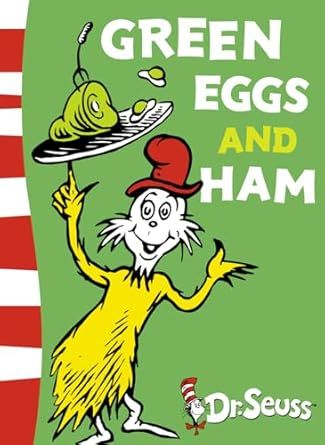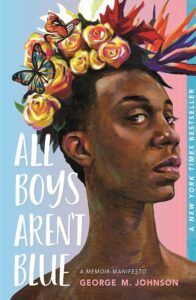Children’s books have always sparked discussion, with people talking about their favourite series or the books that made them a reader. Sometimes, though, this discussion isn’t about beloved memories or which famous children’s books are the best to pass on to new readers. Instead, often after re-reading beloved favorites to a new generation, readers often discover the books they loved as children have surprisingly messed-up messages. Polarizing children’s books aren’t new, but they provide endless material for debate — some of it lighthearted, but some quite serious.
When I talk about polarizing children’s books in this post, I’m talking about legitimate debate: discussions over whether the message or moral of a children’s book is innocent and helpful, or actually quite twisted and harmful. Many books have been labelled as polarising because they have been targeted for book bans or other forms of censorship, simply because they feature characters of colour or LGBTQ+ characters; discuss racism, homophobia or other sorts of bigotry; or challenge prejudice. Books that show the full, diverse possibilities of being human, that are written by marginalised people, or that take a frank look at oppressive power structures, are not polarising, even if they are often labelled as such. The “debate” around these books is not legitimate, and so I will not be including books that have been called polarizing for these reasons. Because of this, the majority of the books in this post are written by white, cisgender, heterosexual male authors, as marginalised authors generally do not get the opportunity to publish books that have legitimately polarizing themes.
Polarizing Picture Books
Picture books are a key part of learning to read, and they’re a great way for parents and guardians to bond with the very young children they care for. Many picture books have been beloved for generations, and adults look forward to reading them to kids — but in some cases, re-reading these stories from an adult perspective pulls people up short, realising that the cute story they remember has some unsavoury undertones that they weren’t expecting.
The Giving Tree by Shel Silverstein
Dozens of articles have been written about The Giving Tree, a hugely successful picture book that has been translated into many languages and is still read around the world 60 years after it was first published. At first glance, The Giving Tree is about the importance of generosity, particularly from a caregiving figure towards a child; the titular tree nurtures, feeds, and protects a young boy, giving him shade and apples, and a place to play. But adult readers who have gone back to the book point out that the tree’s generosity completely destroys her, and that the boy, despite growing into an adult man over the course of the story, never learns another important part of growing up: the need to give back to others, rather than just taking all the time.

The Rainbow Fish by Marcus Pfister
I loved The Rainbow Fish as a kid, mostly because of the gorgeous illustrations and the shiny foil scales, which were incredibly appealing to me. The message of the story is, in some ways, similar to The Giving Tree, although it has a slightly different beginning. The Rainbow Fish, with his beautiful scales, is vain and proud, and isolates himself from the other fish, but he learns humility and generosity, and gives his scales away to the other fish so everyone can be special. Learning not to think of yourself as better than other people is, of course, important. But, as Book Riot writer Abby Hargreaves has pointed out, this isn’t the only way to interpret the story. The Rainbow Fish suggests that if a person is special or unique in some way, it’s on them to make other people feel okay about that, even if they diminish themselves in the process. Couldn’t we have had a version of The Rainbow Fish where the Rainbow Fish learns not to be aloof, but doesn’t have to rip out his own scales to do so?

Green Eggs and Ham by Dr. Seuss
Green Eggs and Ham is one of the many beloved stories by famous author Dr. Seuss. Written to win a bet that Seuss couldn’t write a story using only 50 different words, Green Eggs and Ham is a fun, rhyming romp, following one of Seuss’s anthropomorphic characters being hounded to eat green eggs and ham by a mischievous figure known as Sam-I-Am. This hounding is the root of the debate that has made this book polarising. Parents dealing with young children who are refusing to eat various foods because they’re “yucky” might be able to draw on the story to get their kids to eat a wider variety of food, but Sam-I-Am relentlessly forces his green eggs and ham on the book’s other character, never taking “no” for an answer and repeatedly crossing his boundaries. The message of Green Eggs and Ham could easily be read as “if you badger someone enough, they’ll eventually agree to whatever you want — and they’ll like it”, which is a terrible lesson.
Chapter Book Controversy
Books for young children aren’t the only ones that have caused a huge amount of discussion over whether their message is wholesome or horrific. Beloved chapter books have also sparked debate, with questions over whether children reading alone will have the ability to look at the messages critically, or whether they’ll absorb them without thinking too deeply.

The Chronicles of Narnia by C. S. Lewis
The Narnia books started out polarising. The author, C. S. Lewis, was a member of the Oxford-based writers’ group The Inklings, along with J. R. R. Tolkien. Tolkien’s approach to fantasy was thorough and in-depth — you don’t end up writing The Silmarillion without some seriously deep worldbuilding. By contrast, Lewis had an “everything but the kitchen sink” approach to his writing, including bringing Father Christmas into The Lion, the Witch and the Wardrobe for a cameo appearance, something that almost made Tolkien stop talking to his friend. Later readers have also looked back at the Narnia stories and realised that they contain several elements that are problematic, including sexism and racism. One of the most frequent discussions is over the ultimate fate of Susan Pevensie in the final novel in the series. Unlike the other children who have travelled to Narnia, Susan does not appear in The Last Battle, and her siblings reveal that she no longer believes in Narnia and is more interested in makeup and dating. The sexism in this depiction of Susan is clear, and this in itself is not polarising. The polarising aspect of Susan’s ending lies in the many discussions about whether she has lost out by not ending up in the even better version of Narnia (an obvious reference to Heaven) with her siblings and friends, or if she is actually the only lucky former “friend of Narnia”, as she has escaped the train crash that killed everyone else.

Please Mrs Butler by Allan Ahlberg
As a late-thirties British reader, I grew up with the collection of poems Please Mrs Butler in my primary school libraries. Please Mrs Butler contains several poems all based around school experiences, which are fun, memorable, and lighthearted — at least on the surface. However, the titular poem, Please Mrs Butler, takes on a more worrying tone when re-reading it as an adult. The poem is structured as two sides of a conversation: a little girl complaining about a boy in her class, Derek Drew, who keeps bothering her, and the teacher, Mrs Butler, who gives the girl plenty of options that seem to revolve around ignoring Derek or leaving the situation. Notably, Mrs Butler never actually shows any signs of doing her job and tackling Derek Drew’s bullying behaviour. While the poem is obviously meant to be a jokey look at a complaining child and a tired teacher, anyone who has experienced bullying and has been ignored or brushed off by adults won’t find it so funny.

George’s Marvellous Medicine by Roald Dahl
Roald Dahl’s books have been wildly popular for decades, inspiring dozens of film adaptations and setting the tone for children’s literature ever since. Like the Narnia stories, Roald Dahl’s books have faced understandable critique in the time since they were first published; his stories are notoriously fatphobic, there are several instances of sexism and racism, and Dahl himself was openly antisemitic. It is also understandable that Dahl’s books have remained popular, as the confidence, independence, and often naughtiness of his child protagonists make them appealing to child readers. Before Dahl, child main characters in books were often well-behaved children, who were supposed to provide a good example for the child readers. Even E. Nesbit’s more realistic child characters, who bicker and make mistakes, are ultimately trying to behave for the adults around them. Dahl’s child characters appeal to young readers because, in many cases, they try — and succeed — in outsmarting and getting one-up on the unpleasant adults they encounter. The most famous examples of this are Matilda and James from James and the Giant Peach, but another Dahl child protagonist who runs rings around a horrible adult is George from George’s Marvellous Medicine. George makes the titular medicine as a prank to punish his grandmother, who is verbally abusive to him; however, the results are the stuff of nightmares, as the “medicine” first makes her grow alarmingly tall, and then, when George tries to recreate the medicine, his grandmother shrinks until she disappears completely. On the one hand, Dahl’s child characters are often reacting to abuse; but on the other, their actions become the stuff of nightmares, whether they are making grandmothers vanish, convincing teachers that their classrooms are haunted (Matilda), or turning an entire family into anthropomorphic swans (The Magic Finger).
As I noted at the beginning of this post, many children’s books are wrongly considered polarizing and challenged in schools or libraries because they are written by and are about LGBTQ+ people or people of color. I believe that calling these books polarising is wrong; there should be no debate about the existence of marginalized people, and the culture wars that have developed around them are manufactured and intended to create division in society. However, the impact of these culture wars means that many great books are sidelined, and that marginalized authors, who already face barriers when breaking into publishing, are seeing a negative impact on their careers. To make it even more difficult for current authors, lists of “the most banned books” often focus on famous classics that have no difficulties in making sales, such as To Kill A Mockingbird.
Recent banned books include memoirs like All Boys Aren’t Blue by George M. Johnson, a collection of essays about Johnson’s life growing up as a queer Black man, or the graphic novel memoir Gender Queer by Maia Kobabe. Fiction has also been targeted by book bans; The Poet X by Elizabeth Acevedo and The Black Flamingo by Dean Atta have both been challenged in schools, among many other books for young adults. While the content of these books is not polarising, the antipathy towards them is a result of the increasing polarisation of society. Hopefully, readers, writers, teachers, and librarians will be able to change the tide, stop book bans, and move into a future where the book discussions we have are lively, legitimate, thoughtful, and fun. If you want to defend the freedom to read, read Kelly Jensen’s guide to how to fight book bans and censorship.
For more on books that have been unfairly criticised or banned, check out our article on 10 of the Most Banned and Challenged Books in the Last Decade. If you’re interested in books that aren’t polarising, but are genuinely bad, try What Are the Worst Books of All Time?
This post was originally published on here








